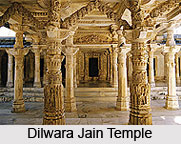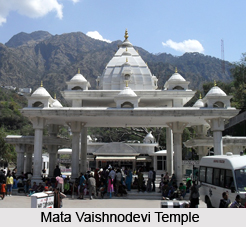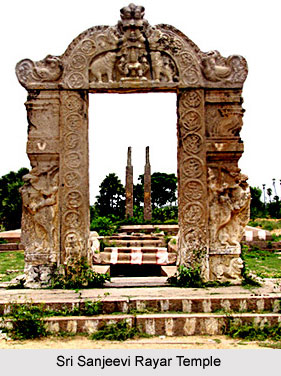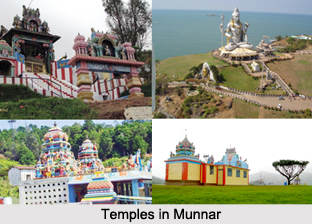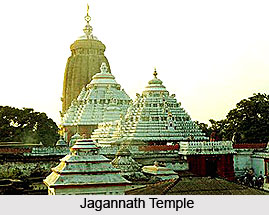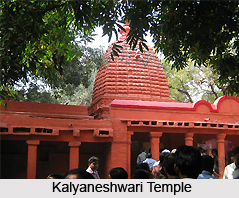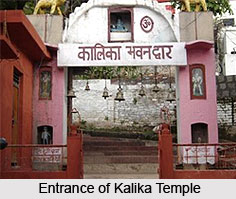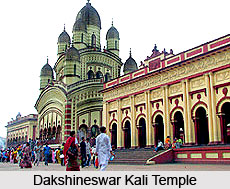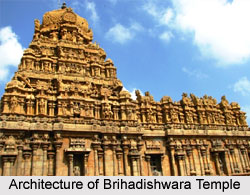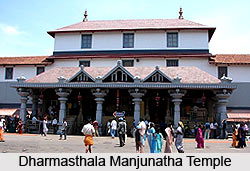 The Dharmasthala Manjunatha Temple is an ancient temple that is around 800 years old is located in the temple town of Dharmasthala in Dakshin Kannada, Karnataka. Dharmasthala is perhaps the most highly revered and best known temple town in Karnataka. Located amidst the picturesque Western Ghats on the banks of the Netravati River, it is about 100 kms from Udupi.
The Dharmasthala Manjunatha Temple is an ancient temple that is around 800 years old is located in the temple town of Dharmasthala in Dakshin Kannada, Karnataka. Dharmasthala is perhaps the most highly revered and best known temple town in Karnataka. Located amidst the picturesque Western Ghats on the banks of the Netravati River, it is about 100 kms from Udupi.
The deities of the temple are Lord Shiva, who is referred to as Manjunatha. The temple is considered unique since it belongs to the Shaiva sect of Hinduism. The priests are Shivalli Brahmins, who are Vaishnavas, and the administration is run by a Jain Bunt family called the Pergades. The temple in Dharmasthala reflects the genuine spirit of religion. Devotees of all caste and creed visit this holy place well known for charity. Every visitor loves the hospitality extended by the temple. Approximately 10,000 devotees throng the temple premises each day. Every day prasadam is distributed amongst the visitors. Manjunatheshwara temple has a big and clean kitchen, which is used for preparing the food. Moderately priced guestrooms are there to cater to the needs of the travellers.
Dharmasthala literally means the place where Dharma prevails. True to the meaning of its name Dharmasthala in Karnataka is a place where charity is the way of life. People from all walks of life are accepted without discrimination. Dharmasthala, hence, is quite popular amongst pilgrims.
Legend and origin
Ancient legends and age-old folklores enlace the place. Initially 800 years ago, Dharmasthala was a small village known as Kuduma in Mallarmadi, then a village in Belthangady. Here lived the Jain Bunt chieftain Birmanna Pergade and his wife Ammu Ballalthi in a house called Nelyadi Beedu.
According to the legend, the four guardian angels of Dharma disguised themselves as human beings and visited the chieftain"s house. They were searching for a place where Dharma could be preached and it could be propagated and continued. The Pergade family received them with due respect as is shown to visitors. The Dharma Daivas were very pleased with the hospitality shown by Birmanna Pergade and appeared in his dreams that night. The guardian angels informed the chieftain the purpose of their visit and requested the Pergade couple to vacate their house and follow the path of Dharma and also worship the Daivas. Asking no questions, the Pergade built himself another house and began worshiping the Daivas at Nelyadi Beedu. Till date, the worship of the Dharma Daivas continues in this house.
The Dharma Daivas again appeared in the dreams of the chieftain and instructed him to build separate shrines for the four Daivas Kalarahu, Kalarkayi, Kumara Swami and Kanyakumari. Also, Pergade was also directed to choose two persons of noble descent who would act as the oracles of the Dharma Daivas. Pergade chose four worthy persons who would assist him in performing his duties as an Executive Head of the four shrines.
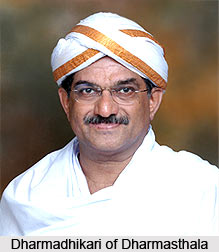 In return, the Daivas promised that the Pergade family would get abundant resources in the form of charity and fame through the Kshetra. Pergade, as desired, built the shrines and invited Brahmin priests to perform the rituals. The priests requested Pergade to also build a Shiva Linga besides the Daivas. Annappa Swamy, the servant of the Daivas, was subsequently sent to Kadri, near Mangalore, to procure a Shiva lingam. Subsequently, the Dharmasthala Manjunatha Temple was erected around the Shiva Linga.
In return, the Daivas promised that the Pergade family would get abundant resources in the form of charity and fame through the Kshetra. Pergade, as desired, built the shrines and invited Brahmin priests to perform the rituals. The priests requested Pergade to also build a Shiva Linga besides the Daivas. Annappa Swamy, the servant of the Daivas, was subsequently sent to Kadri, near Mangalore, to procure a Shiva lingam. Subsequently, the Dharmasthala Manjunatha Temple was erected around the Shiva Linga.
Pergade Family
The Pergade family is a Jain Bunt family who descended from the creator of the temple. Birmanna Pergade and his wife Ammu Ballalthi and are the hereditary trustees of the temple. The eldest member of the Pergade family acts as the Dharma Adhikari or the Chief Administrator. He assumes the title of the Heggade.
The Heggade was the feudal lord of the temple town and solved civil or criminal disputes. This was a judicial function and continues even to this day: the Heggade sits in judgments on hundreds of civil complaints, known as Hoyulu, each day. The Pergade family has continued this tradition of assuming the position of Dharma Adhikari since 20 generations.
Rules to Enter the Dharmasthala Manjunatha Temple
Devotees entering the temple must follow the below mentioned code of conduct before entering the temple premises:
•Before entering the Sanctum Sanctorum men should remove their shirt and innerwear (above the waist)
•Children less than two years of age are not allowed to enter the Sanctum Sanctorum.
Annadaanam
Anna Dana (offering food) is considered as the greatest virtue among offering Alms. Here at Dharmasthala the temple committee organizes free food to all its devotees defying all barriers of caste and creed. Anna Dana at the famous Annapurna dining hall is a unique feature of Dharmasthala, where a simple meal of rice, dal, vegetables and buttermilk is served in the scrupulously clean, airy hall and a friendly environment.
Festivals at Dharmasthala
Ganesha festival, Navaratri and Deepavali festivals are celebrated with grandeur at Dharmasthala. The annual festival or carnival called Pattanajae Jatra is held in April every year before the onset of monsoons. People flock from far and near during these times.
How to Reach Dharmasthala Manjunatha Temple
The Dharmasthala Manjunatha Temple is well connected by roads. It lies 300 km from Bengaluru and 65 km from Mangalore. The nearest railway station and airport is Mangalore International Airport.












